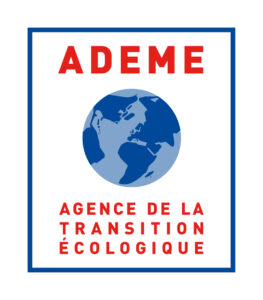Muhammad USMAN
muhammad.usman@ensc-rennes.fr
Efficient PFAS removal from contaminated soils through combined washing and adsorption in soil effluents
Efficient PFAS removal from contaminated soils through combined washing and adsorption in soil effluents
Muhammad Usman, Aaifa Chaudhary, Khalil Hanna
Journal of Hazardous Materials, 476 135118 (2024)
This study investigates soil washing as a viable strategy to remove poly- and perfluoroalkyl substances (PFAS) from contaminated soils using various washing agents including water, methanol, ethanol, and cyclodextrin ((2-Hydroxypropyl)-β-cyclodextrin HPCD)). Water was less effective (removing only 30 % of PFAS), especially for long-chain hydrophobic PFAS. Methanol (50 % v/v) or HPCD (10 mg g–1 soil) achieved > 95 % PFAS removal regardless of PFAS type, soil size fraction (0–400 µm or 400–800 µm), or experimental setups (batch or column, at liquid/solid (L/S) = 1). Column optimization studies revealed improved efficiency at L/s = 10 with diluted washing solutions, where HPCD exhibited rapid PFAS mobilization even at lower concentrations (1 mg mL–1). We then applied a first-order decay model to effectively predict PFAS breakthrough curves and mobilization within soil columns. Subsequent treatment of wash effluents by activated carbon and biochar effectively reduced PFAS concentrations below detection limits. The performance of both soil washing and subsequent adsorption was found to depend strongly on the specific characteristics of PFAS compounds. These findings highlight the significant potential of methanol and HPCD in soil washing and the effectiveness of integrated soil washing and adsorption for optimizing PFAS removal.
Carbonaceous materials for adsorptive removal of perfluoroalkyl and polyfluoroalkyl substances (PFAS) and regeneration of spent adsorbents
Carbonaceous materials for adsorptive removal of perfluoroalkyl and polyfluoroalkyl substances (PFAS) and regeneration of spent adsorbents
Aaifa Chaudhary, Muhammad Usman, Stefan Haderlein, Khalil Hanna
Journal of Water Process Engineering, 68 106498 (2024)
Per- and polyfluoroalkyl substances (PFAS) have become a major concern in global water resources due to their widespread existence and severe toxicity. This review compiles current research on the use of carbonaceous materials, including activated carbon and biochar, to remove PFAS from diverse water matrices. The adsorption efficiency of both pristine and modified forms of these adsorbents is evaluated, highlighting how targeted modifications can enhance adsorption performance. Adsorption efficiency is dictated by the complex interplay between adsorbent properties, PFAS type, and the solution chemistry. These factors are critically discussed with an emphasis on the underlying adsorption mechanisms. Moreover, regeneration of spent adsorbents remains a significant challenge. Various regeneration techniques are explored, including thermal, solvent-based, photocatalytic, and redox processes, highlighting their associated opportunities and limitations. These regeneration methods hold significant promise for facilitating the integration of adsorption with degradation strategies, ultimately achieving complete PFAS removal. Future research should prioritize the development of efficient adsorbents with improved properties, integration with PFAS degradation strategies, and evaluations in complex multi-contaminant/multi-component environmentally relevant water systems. Optimizing regeneration techniques for large-scale implementation is also essential. This optimization process should be guided by cost-benefit analyses, environmental impacts, and a careful evaluation of energy requirements.
Retention and transport of PFOA and its fluorinated substitute, GenX, through water-saturated soil columns
Retention and transport of PFOA and its fluorinated substitute, GenX, through water-saturated soil columns
Guanhong Liu, Muhammad Usman, Tao Luo, Pierre-François Biard, Kuangfei Lin, H. Chris Greenwell, Khalil Hanna
Environmental Pollution, 337 122530 (2023)
Perfluoro-2-propoxypropanoic acid (GenX) has emerged as a substitute for perfluorooctanoic acid (PFOA) especially since PFOA was listed among the persistent organic pollutants (POPs) by the Stockholm Convention in 2019. However, limited knowledge exists regarding the behavior and mobility of GenX in natural soils hindering the prediction of its environmental fate. This study investigated the mobility and retention of GenX and PFOA in soils under batch and water-saturated flow-through conditions. Batch experiments revealed that GenX has a lower binding affinity to soil than longer-chained PFOA, potentially threatening groundwater resources. Unlike metal-oxides/minerals (ferrihydrite, gibbsite and manganese dioxide), biochar (BC) and activated carbon (AC) amendments significantly enhanced the sorption of both GenX and PFOA in soil. Sorption data on minerals and carbonaceous materials implied that for shorter-chained GenX, the predominant mode of sorption was through electrostatic (ionic) interactions, while for longer-chained PFOA, hydrophobic interactions became progressively more important with increasing chain length. The dynamic flow experiments demonstrated that these soil amendments enhanced the retention of both compounds, thereby decreasing their mobility. Simultaneous injection of both compounds into columns pre-loaded with either PFOA or GenX increased their retardation. GenX sorption was more affected by pre-sorbed PFOA compared to the minimal impact of pre-loaded GenX on PFOA sorption. A newly developed reactive transport model, which incorporates a two-site sorption model and accounts for kinetic-limited processes, accurately predicted the sorption and transport of both compounds in single and binary contamination systems. These findings have important implications for predicting and assessing the fate and mobility of per- and polyfluoroalkyl substances (PFAS) in soils and groundwaters.
Chemical oxidation of hexachlorocyclohexanes (HCHs) in contaminated soils
Sorption of nalidixic acid onto micrometric and nanometric magnetites: Experimental study and modeling
Fenton oxidation to remediate PAHs in contaminated soils: a critical review of major limitations and counter-strategies
Application of chemical oxidation to remediate HCH-contaminated soil under batch and flow through conditions
Effect of thermal pre-treatment on the availability of PAHs for successive chemical oxidation in contaminated soils.
Remediation of an aged PCP-contaminated soil by chemical oxidation under flow-through conditions
Dual functional materials capable of integrating adsorption and Fenton-based oxidation processes for highly efficient removal of pharmaceutical contaminants
Interactions of synthetic Fe(II)-Fe(III) green rusts with pentachlorophenol under various experimental conditions.
Interactions of synthetic Fe(II)-Fe(III) green rusts with pentachlorophenol under various experimental conditions.
T. Kone, Khalil Hanna, M. Usman
Colloids and Surfaces A: Physicochemical and Engineering Aspects, (2011)
Sorption of pentachlorophenol (PCP) to three different green rusts (GRs) was studied versus time and initial PCP concentration at neutral pH. A competitive adsorption occurred when salicylate or silicate was present in the reaction medium. The monitoring of chloride formation and PCP byproducts indicated the absence of any possible reductive pathway in the PCP removal. All solid characterization showed that the PCP sorption in the presence or absence of foreign ligands did not alter the GR structure. Addition of nitrate (weak oxidant) involved a gradual release of PCP in solution from the sorbent solid. This is probably due to the oxidative transformation of GR into magnetite that sorbs less PCP. However, reaction with a strong oxidant (H2O2) involved both dechlorination and mineralization of PCP via oxidation reaction. HPLC and ion chromatography analysis, TOC and dissolved iron measurements showed that PCP had been degraded by heterogeneous Fenton-like reaction. Both X-ray diffraction analysis and Raman spectroscopy showed that the oxidation of GR may lead to magnetite (Fe3O4) or goethite ( -FeOOH), depending on the oxidant type. As green rusts have considerable potential in environmental applications, the influence of naturally occurring ligands and/or oxidants on the reactivity of green rusts should be considered.
Removal of PCBs in contaminated soils by means of chemical reduction and advanced oxidation processes
Removal of PCBs in contaminated soils by means of chemical reduction and advanced oxidation processes
Victoria Rybnikova, Muhammad Usman, Khalil Hanna
Environmental Science and Pollution Research, (2016)
Although the chemical reduction and advanced oxidation processes have been widely used individually, very few studies have assessed the combined reduction/oxidation approach for soil remediation. In the present study, experiments were performed in spiked sand and historically contaminated soil by using four synthetic nanoparticles (Fe(0), Fe/Ni, Fe3O4, Fe3-xNixO4). These nanoparticles were tested firstly for reductive transformation of polychlorinated biphenyls (PCBs) and then employed as catalysts to promote chemical oxidation reactions (H2O2 or persulfate). Obtained results indicated that bimetallic nanoparticles Fe/Ni showed the highest efficiency in reduction of PCB28 and PCB118 in spiked sand (97 and 79 %, respectively), whereas magnetite (Fe3O4) exhibited a high catalytic stability during the combined reduction/oxidation approach. In chemical oxidation, persulfate showed higher PCB degradation extent than hydrogen peroxide. As expected, the degradation efficiency was found to be limited in historically contaminated soil, where only Fe(0) and Fe/Ni particles exhibited reductive capability towards PCBs (13 and 18 %). In oxidation step, the highest degradation extents were obtained in presence of Fe(0) and Fe/Ni (18-19 %). The increase in particle and oxidant doses improved the efficiency of treatment, but overall degradation extents did not exceed 30 %, suggesting that only a small part of PCBs in soil was available for reaction with catalyst and/or oxidant. The use of organic solvent or cyclodextrin to improve the PCB availability in soil did not enhance degradation efficiency, underscoring the strong impact of soil matrix. Moreover, a better PCB degradation was observed in sand spiked with extractable organic matter separated from contaminated soil. In contrast to fractions with higher particle size (250-500 and <500 μm), no PCB degradation was observed in the finest fraction (≤250 μm) having higher organic matter content. These findings may have important practical implications to promote successively reduction and oxidation reactions in soils and understand the impact of soil properties on remediation performance.
Environmental side effects of the injudicious use of antimicrobials in the era of COVID-19
Environmental side effects of the injudicious use of antimicrobials in the era of COVID-19
Muhammad Usman Iftikhar, Muhammad Umar Farooq, Khalil Hanna
Science of the Total Environment, 745 141053 (2020)
Use of antimicrobials in the treatment and prevention of COVID-19, caused by novel coronavirus SARS-CoV-2, is on the rise. The increased use of antimicrobials can have serious consequences on the environment. Antibiotics have had a reasonable role in bacterial co-infections with regards to the management of COVID-19. However, recent evidences suggest that there has been injudicious prescription of antimicrobials. Moreover, a large number of people are self-medicating with antibiotics in a misguided attempt to protect themselves from the virus. This practice is especially prevalent in developing communities. Although common soaps are effective at inactivating enveloped viruses, such as the SARS-CoV-2, use of antibacterial products bearing biocides has increased during this pandemic. Current wastewater treatment techniques are unable to offer complete elimination of antibacterial biocides. These compounds can then accumulate in different environmental compartments thus, disrupting the functioning of native microbes. These microbes are involved in the biogeochemical cycling of elements and environmental remediation. In addition, the presence of antimicrobial elements in the environment can stimulate antimicrobial resistance. Concrete actions are needed to address this issue. Development of an antimicrobial policy specific for COVID-19 is urgently needed. Investments into improving wastewater infrastructure as well as public awareness is crucial. Moreover, global monitoring programs and multidisciplinary collaborations are required to understand the environmental impact of this pandemics.
Sorption of nalidixic acid onto micrometric and nanometric magnetites: experimental study and modeling
Sorption of nalidixic acid onto micrometric and nanometric magnetites: experimental study and modeling
Muhammad Usman, Sébastien Martin, Nicolas Cimetiere, Sylvain Giraudet, Vincent Chatain, Khalil Hanna
Applied Surface Science, (2014)
The sorption of nalidixic acid (NA) was studied onto three kinds of magnetite characterized by different particle sizes (from micrometric to nanometric) and surface properties. Experiments were performed under static batch and dynamic flow conditions. Obtained results indicate that kinetics and extent of sorption was strongly affected by the particle size of tested magnetites. Ionic strength effect was less significant suggesting that aggregation state of the magnetite particles did not affect the sorption. During kinetic sorption experiments, apparent rate constant normalized to solid mass was faster for nanosized magnetite while an opposite trend was observed for the surface area-normalized rate constants. Infrared data suggested the possibility of similar surface interactions on both microsized and nanosized magnetites. Transport of NA in magnetite-packed column was found associated to the instantaneous sorption without any significant effect of kinetic limitation. Breakthrough curves (BC) and sorption extent in columns were calculated by using Thomas, Yan and Yoon-Nelson models. Sorption capacities predicted by Thomas or Yan model were in good agreement with that determined by integrating total area above BC. However, Thomas model failed particularly to predict an accurate concentration at lower and higher time points of the BC. These findings have strong implications in relation to the transport and removal of environmental pollutants in natural and engineered systems.









